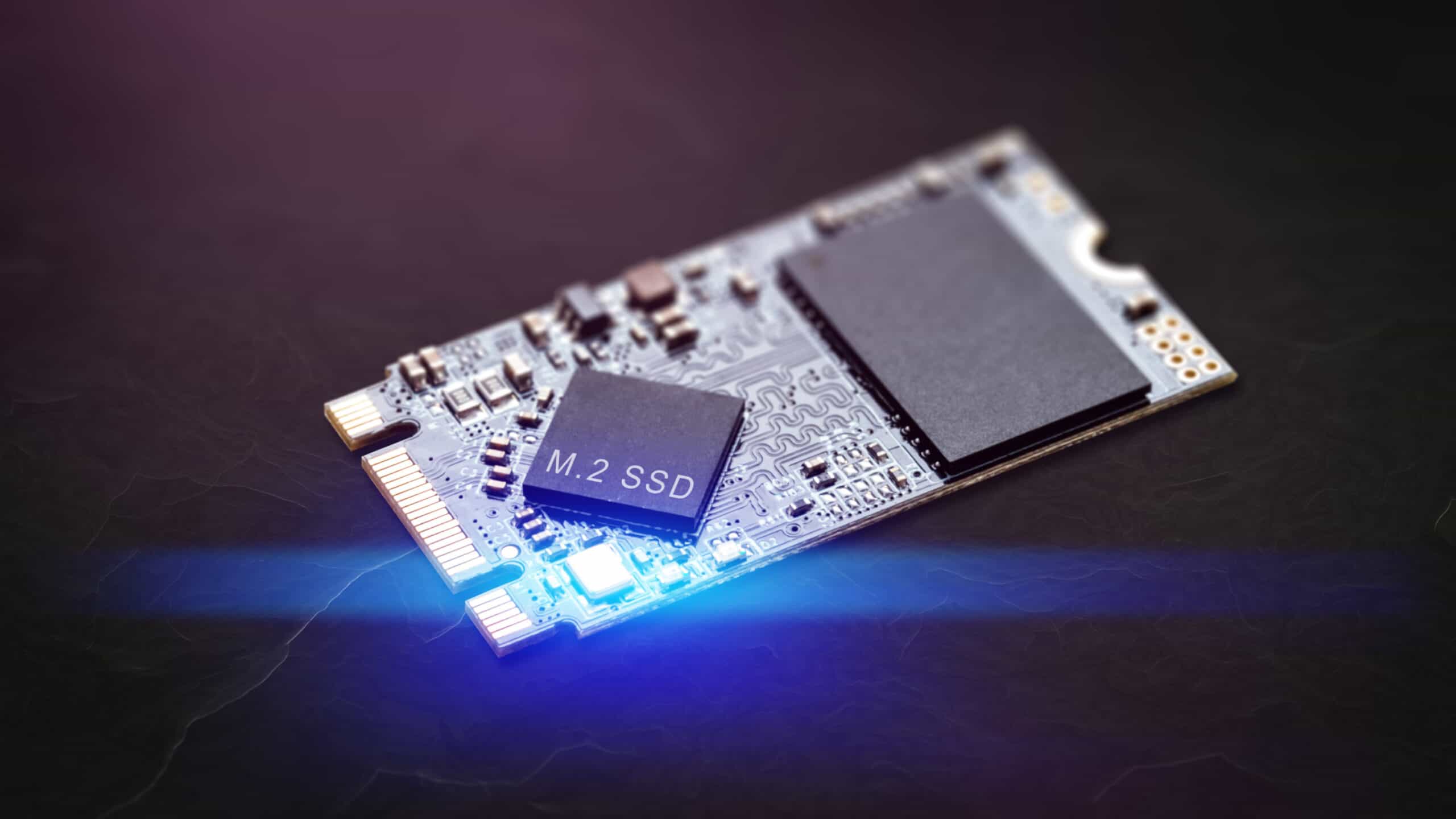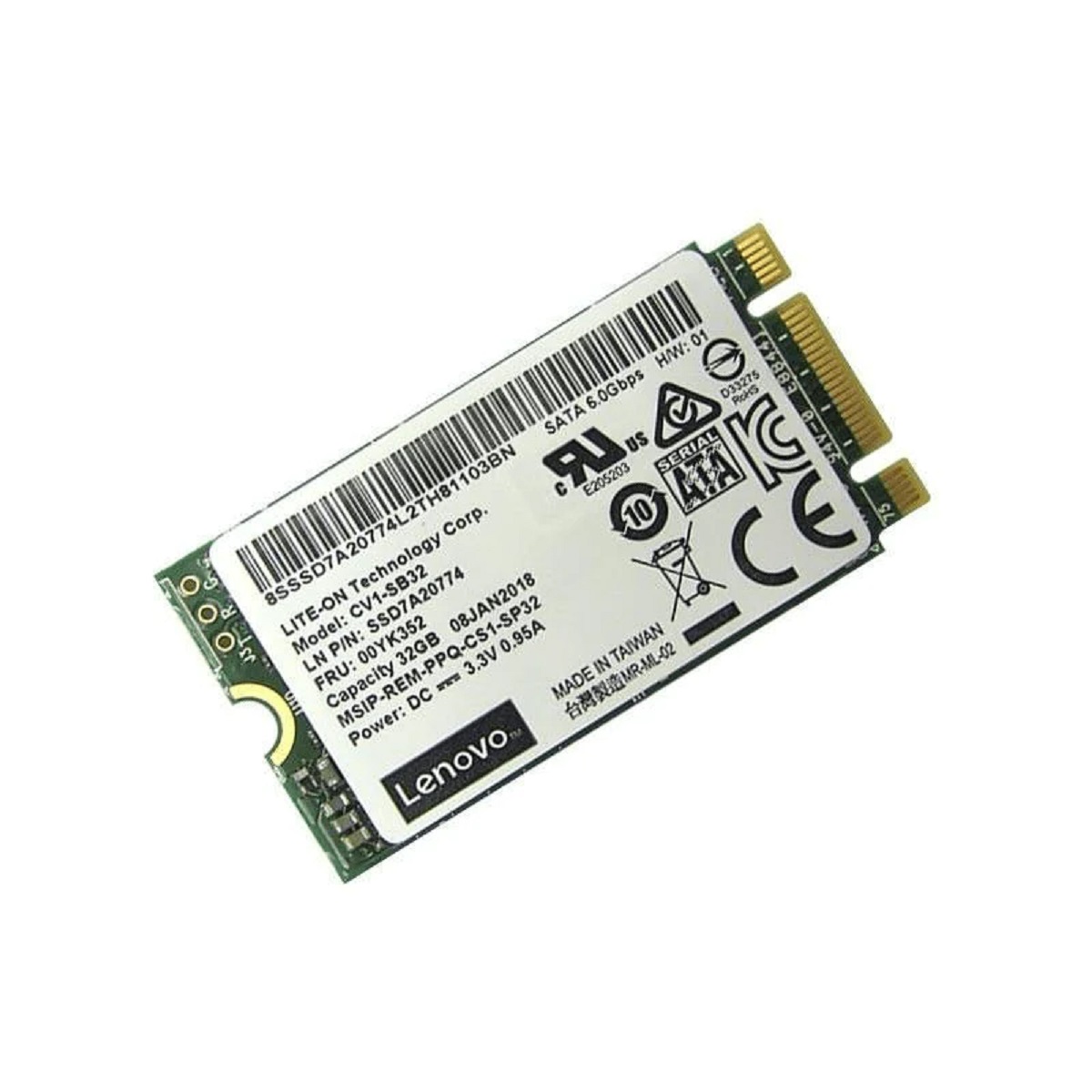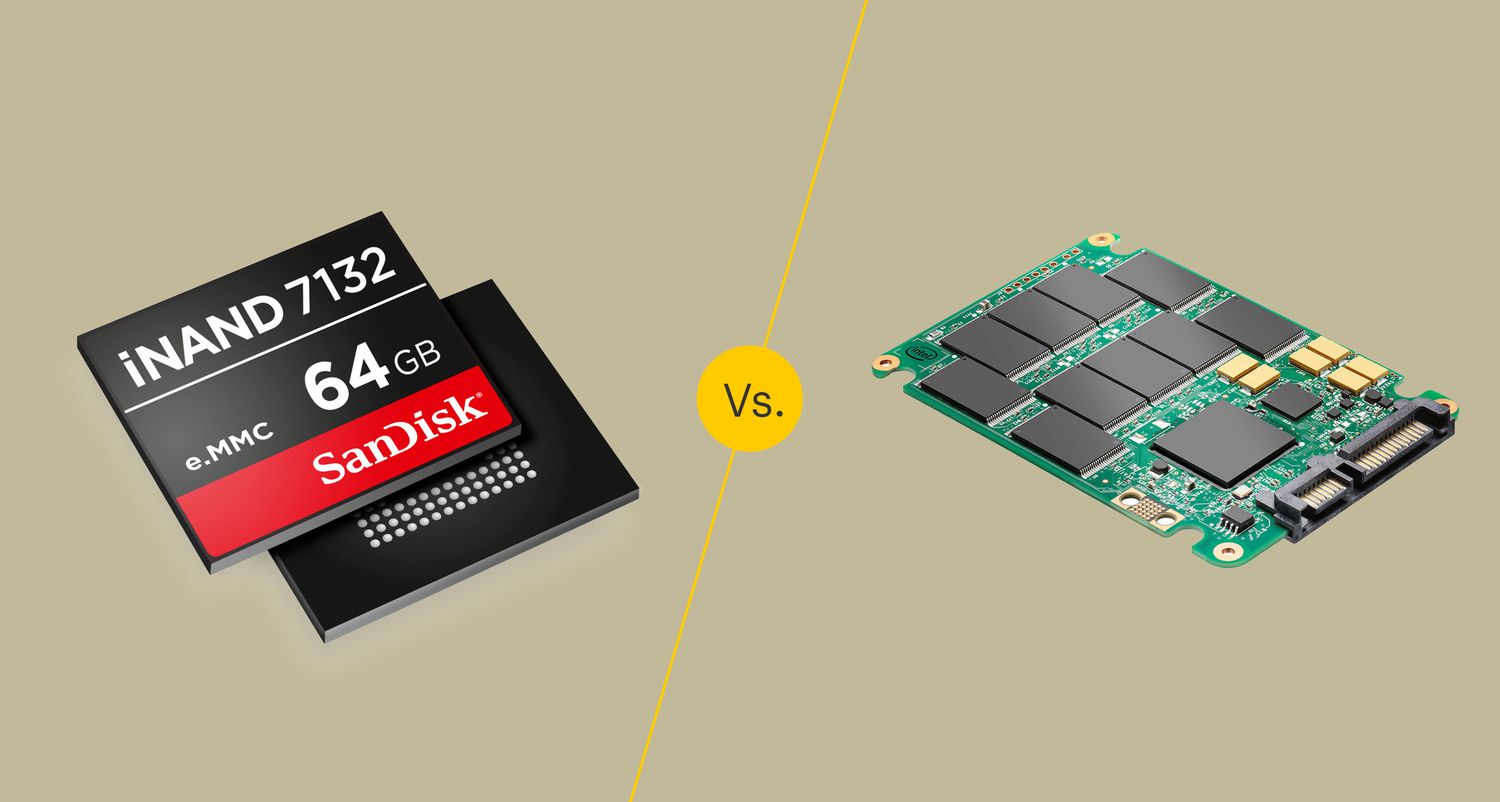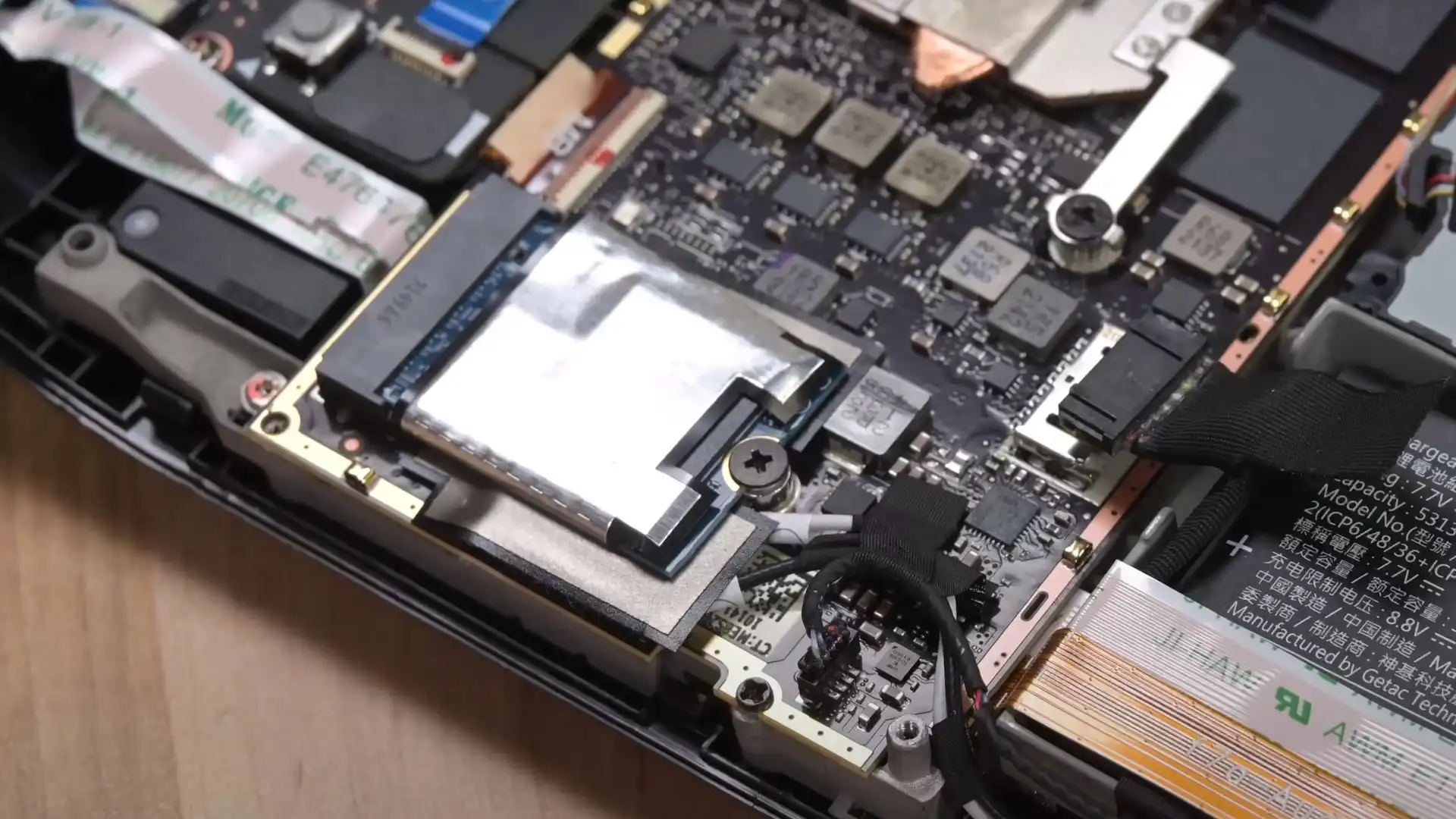Introduction
Welcome to the world of storage technology! With the ever-evolving demand for faster, more efficient data storage, solid-state drives (SSDs) have become a popular choice for many users. Among the various types of SSDs available, one that stands out is the eMMC (embedded MultiMediaCard) solid-state drive. In this article, we will explore what eMMC is, its features, advantages, disadvantages, and its differences from other SSDs.
eMMC is a type of non-volatile memory that is commonly used in electronic devices such as smartphones, tablets, and embedded systems. It combines flash storage with a controller, making it a self-contained and compact storage solution. The eMMC technology has gained popularity due to its affordability and compatibility with a wide range of devices.
Nowadays, we rely heavily on our electronic devices to store and access large amounts of data, whether it’s photos, videos, documents, or applications. The performance and reliability of the storage drive play a crucial role in the user experience. This is where eMMC comes into play, offering a reliable and cost-effective storage option for various devices.
Throughout this article, we will delve into the features, advantages, disadvantages, and common uses of eMMC. By the end, you will have a better understanding of why eMMC solid-state drives have become a popular choice for many users worldwide.
What is eMMC?
eMMC, which stands for embedded MultiMediaCard, is a non-volatile memory storage technology that is commonly used in a wide range of electronic devices such as smartphones, tablets, digital cameras, and IoT (Internet of Things) devices.
A typical eMMC device consists of NAND flash memory chips, a flash memory controller, and a host interface. The controller manages data transfer between the NAND chips and the host device, ensuring efficient and reliable performance.
eMMC technology is different from traditional storage options such as hard disk drives (HDDs) and solid-state drives (SSDs). Unlike SSDs, where the flash storage and controller are separate components, eMMC combines both the flash storage and controller into a single package, making it compact and efficient for use in small electronic devices.
What sets eMMC apart from other storage solutions is its embedded nature. It is directly soldered onto the device’s circuit board, making it a permanent and non-removable storage module. This design eliminates the need for separate connectors or cables, reducing manufacturing costs and enabling a more compact design.
eMMC storage devices follow the MultiMediaCard Association (MMCA) standards, ensuring compatibility and interoperability across various devices and operating systems.
With its small form factor, low power consumption, and cost-effectiveness, eMMC has become a popular choice for storing system files, operating systems, applications, and user data in a variety of electronic devices. It offers a reliable and convenient storage solution for manufacturers and end-users alike.
In the following sections, we will dive deeper into the features, advantages, and disadvantages of eMMC solid-state drives and explore its applications in different devices.
Features of eMMC
eMMC solid-state drives come with a range of features that make them a popular choice for storage in electronic devices. Let’s explore some of the key features:
1. Compact Size: One of the main advantages of eMMC is its compact size. With all the storage components integrated into a single package, it takes up minimal space on a device’s circuit board. This makes it ideal for compact and portable devices such as smartphones and tablets.
2. Cost-Effective: Compared to other storage options like SSDs, eMMC drives are more cost-effective. The integration of the flash storage and controller into a single package reduces manufacturing costs, making it a more affordable option for device manufacturers, which ultimately benefits the end-users.
3. Reliable Performance: eMMC solid-state drives offer reliable performance, ensuring fast and efficient data transfer. The built-in flash memory controller optimizes data management, ensuring that read and write operations are carried out smoothly without any performance hiccups.
4. Low Power Consumption: With increasing focus on energy efficiency, eMMC drives shine in this aspect. They consume less power compared to traditional HDDs, making them well-suited for battery-powered devices. This results in longer battery life and improved device usability.
5. Wide Compatibility: eMMC drives are designed to be compatible with a variety of devices and operating systems. This means that the same eMMC module can be used across different devices, simplifying manufacturing processes and offering flexibility for device manufacturers.
6. Data Security: eMMC comes with built-in security features to protect data stored on the drive. Features like password protection and encryption help safeguard sensitive information from unauthorized access, adding an extra layer of security for users.
7. High capacity options: While eMMC drives are often associated with smaller storage capacities, they are available in a range of sizes, from a few gigabytes to several hundred gigabytes. This allows for ample storage space, even in devices with high storage demands.
These features make eMMC solid-state drives an attractive option for a wide range of electronic devices, including smartphones, tablets, and IoT devices. In the next section, we will explore the advantages of using eMMC in these devices.
Advantages of eMMC Solid State Drive
eMMC solid-state drives offer several advantages that make them a popular choice for many electronic devices. Let’s explore some of these advantages:
1. Cost-Effective: One of the major advantages of eMMC drives is their cost-effectiveness. Compared to other SSD options, eMMC drives are more affordable, making them a practical choice for device manufacturers. This cost-effectiveness extends to end-users as well, as it helps keep the overall device price more affordable.
2. Compact Design: eMMC drives have a compact design, allowing them to fit easily into small and slim devices such as smartphones and tablets. Their small form factor makes them ideal for portable devices where space is limited, without compromising on storage capacity.
3. Reliable Performance: With their integrated flash memory controller, eMMC drives offer reliable performance. The controller manages data transfers efficiently, resulting in fast and seamless read and write speeds. This ensures smooth multitasking and quick access to stored data.
4. Low Power Consumption: Another advantage of eMMC drives is their low power consumption. Compared to traditional hard disk drives (HDDs), eMMC drives consume less energy, making them well-suited for battery-powered devices. This helps extend the battery life of smartphones and other portable devices.
5. Compatibility: eMMC drives are designed to be compatible with a wide range of devices and operating systems. This compatibility ensures seamless integration, allowing devices to leverage the benefits of eMMC storage without any compatibility issues.
6. Easy Integration: eMMC drives are soldered directly onto a device’s circuit board, making them easy to integrate during the manufacturing process. Their compact design and simple installation eliminate the need for additional connectors or cables, reducing manufacturing complexity and costs.
7. Stability and Durability: eMMC drives are known for their stability and durability, making them reliable storage options. They are resistant to shock, vibration, and temperature variations, making them suitable for use in rugged environments or devices subjected to frequent movement.
These advantages make eMMC solid-state drives an appealing choice for various electronic devices, especially those that prioritize affordability, compact design, and reliable performance. In the next section, we will explore some of the disadvantages of eMMC drives to provide a more well-rounded understanding of this storage technology.
Disadvantages of eMMC Solid State Drive
While eMMC solid-state drives offer several advantages, it is important to consider their disadvantages as well. Let’s explore some of the drawbacks associated with eMMC drives:
1. Limited Performance: Compared to high-performance SSD options like NVMe drives, eMMC drives have lower read and write speeds. This can result in slower data transfer rates and longer loading times for applications and large files. However, it is important to note that eMMC drives still provide sufficient performance for everyday tasks and general computing needs.
2. Limited Storage Capacity: eMMC drives typically come with limited storage capacity options when compared to other SSDs. While higher capacity eMMC drives are available, they may not be as widespread or readily available as higher capacity SSD options. This limitation can be a drawback for users who require a larger storage capacity for their devices.
3. Non-Upgradable: One significant disadvantage of eMMC drives is that they are non-upgradable. Due to the embedded nature of eMMC storage, it cannot be easily replaced or upgraded like traditional SSDs. This means that the storage capacity of the device is fixed, and users cannot expand it without replacing the entire device.
4. Limited Lifespan: Like any other flash-based storage technology, eMMC drives have a limited lifespan due to the finite number of program/erase cycles they can endure. While eMMC drives can last for several years under normal usage, they may not provide the same lifespan as higher-grade SSDs. However, for typical consumer devices, the lifespan of eMMC drives is generally sufficient.
5. Lower Data Transfer Speed: While eMMC drives offer reliable performance, they are not able to match the high data transfer speeds of more advanced SSD options. This can result in slower file transfers, especially when dealing with large files or performing intensive read/write operations. However, for everyday use and typical device functionalities, the data transfer speeds of eMMC drives are generally adequate.
It is important to consider these disadvantages alongside the advantages of eMMC drives when deciding whether they are suitable for a particular device or use case. While eMMC drives may have some limitations, they continue to be a popular choice due to their affordability, compact design, and reliability for various devices such as smartphones, tablets, and embedded systems.
Differences between eMMC and other SSDs
While eMMC drives fall under the category of solid-state drives (SSDs), there are several key differences between eMMC and other types of SSDs. Let’s explore some of these differences:
1. Design and Form Factor: One significant difference is the design and form factor. eMMC drives come in a compact integrated package that combines the flash storage and controller, making them smaller and suitable for devices with limited space. In contrast, other SSDs like SATA or NVMe drives have a separate controller and flash storage unit, allowing for more flexibility in terms of form factor and size.
2. Performance: Another crucial difference is the performance. eMMC drives typically offer lower performance compared to other SSDs. While eMMC drives provide reliable performance for everyday computing tasks, they have slower read and write speeds and lower data transfer rates compared to high-performance SSD options like NVMe drives.
3. Upgradability: The upgradability of eMMC drives is limited, as they are soldered directly onto the device’s circuit board. This means that users cannot easily upgrade or replace the storage module, and the storage capacity is fixed. In contrast, other SSDs like SATA or NVMe drives are typically replaceable and offer options for storage capacity upgrades.
4. Storage Capacity: Storage capacity options differ between eMMC drives and other SSDs. While eMMC drives are available in a range of capacities, including higher capacity options, they typically offer smaller storage capacities compared to other SSDs. SATA and NVMe drives, on the other hand, offer a wider range of storage capacity options, including high-capacity drives for users with greater storage needs.
5. Price: Price is another notable difference between eMMC drives and other SSDs. eMMC drives are more cost-effective, making them a practical choice for budget-conscious consumers and device manufacturers. Other SSDs like SATA or NVMe drives are generally more expensive due to their higher performance capabilities and storage capacity options.
6. Compatibility: eMMC drives are designed to be compatible with a wide range of devices and operating systems, ensuring seamless integration. Other SSDs may require specific interfaces (e.g., SATA, PCIe) for compatibility, and drivers may need to be installed to ensure proper functionality.
These differences between eMMC drives and other SSDs highlight the unique characteristics and trade-offs associated with each storage option. While eMMC drives offer affordability, compact design, and reliability, other SSDs provide higher performance, flexibility in terms of storage capacity and form factor, and upgradability. It is important for users to consider their specific needs and requirements when choosing between these different storage options.
Common Uses for eMMC
eMMC solid-state drives find application in a variety of electronic devices that require reliable and cost-effective storage solutions. Let’s explore some of the common uses for eMMC:
1. Smartphones and Tablets: One of the most widespread uses for eMMC drives is in smartphones and tablets. The compact size and affordability of eMMC drives make them an ideal choice for these portable devices. They provide storage for the device’s operating system, applications, photos, videos, and other user data.
2. Digital Cameras and Camcorders: eMMC drives also find application in digital cameras and camcorders, where they serve as the storage medium for capturing and storing photos and videos. The compact design and reliable performance of eMMC drives make them suitable for these devices, allowing users to capture high-quality media files smoothly.
3. Automotive Infotainment Systems: eMMC drives are commonly used in automotive infotainment systems. These systems require reliable and responsive storage for music, maps, navigation data, and multimedia content. The durability and stability of eMMC drives make them well-suited for automotive environments, including extreme temperatures and vibrations.
4. Embedded Systems: eMMC drives are frequently employed in embedded systems, which are specialized computer systems designed for specific applications. These systems include IoT devices, industrial automation equipment, medical devices, and more. The compact size, low power consumption, and stability of eMMC drives make them an excellent choice for these embedded applications.
5. Portable Gaming Devices: Many portable gaming devices, such as handheld consoles and gaming tablets, rely on eMMC drives for storage. These drives provide the necessary space to store game files, game saves, and other related data. The compact design and cost-effectiveness of eMMC drives make them an attractive option for gaming device manufacturers.
6. Consumer Electronics: eMMC drives find usage in various other consumer electronics, including e-readers, portable media players, wearable devices, and more. These devices require reliable and efficient storage for their respective functionalities and user data, making eMMC drives a suitable choice.
7. Embedded Linux Systems: eMMC drives are often used as the primary storage solution in embedded Linux systems. These systems, such as single-board computers and development boards, rely on eMMC for booting the operating system and storing application files. The compatibility and reliability of eMMC drives make them a popular choice for these types of systems.
These are just a few examples of the common uses for eMMC drives. With their affordability, compact design, and reliability, eMMC drives continue to be a preferred storage solution in numerous electronic devices across various industries.
Conclusion
In the ever-evolving world of storage technology, eMMC solid-state drives have carved out a unique place for themselves. With their compact design, cost-effectiveness, and reliable performance, eMMC drives have become a popular choice for a wide range of electronic devices.
Throughout this article, we have explored what eMMC is, its features, advantages, disadvantages, differences from other SSDs, and common uses. eMMC drives offer a cost-effective storage solution, making them accessible to both device manufacturers and end-users.
While eMMC drives may not provide the same level of performance and upgradability as other SSD options, they excel in applications that prioritize affordability, compactness, and reliability. From smartphones and tablets to digital cameras and automotive infotainment systems, eMMC drives serve as the backbone of storage in numerous electronic devices.
It is important to consider both the advantages and disadvantages of eMMC drives when evaluating their suitability for a particular device or use case. While they may not be the ideal choice for high-performance computing or storage-intensive applications, eMMC drives offer a reliable and affordable solution for everyday computing needs.
In conclusion, eMMC solid-state drives continue to play a significant role in providing storage solutions for electronic devices. As technology advances, we can expect further improvements in eMMC drives, such as higher capacities and enhanced performance. With their integration, affordability, and compatibility, eMMC drives are sure to remain an important player in the storage market for years to come.

























